Flowers have always been associated with beauty, love, and joy. Their vibrant colors and enchanting fragrances have the power to uplift spirits and bring happiness to our lives. However, there is another side to flowers that often goes unnoticed – their connection to death. In this article with Impeccable Nest, we will delve into the intriguing world of floral symbolism and explore the various ways in which flowers have come to represent mortality.
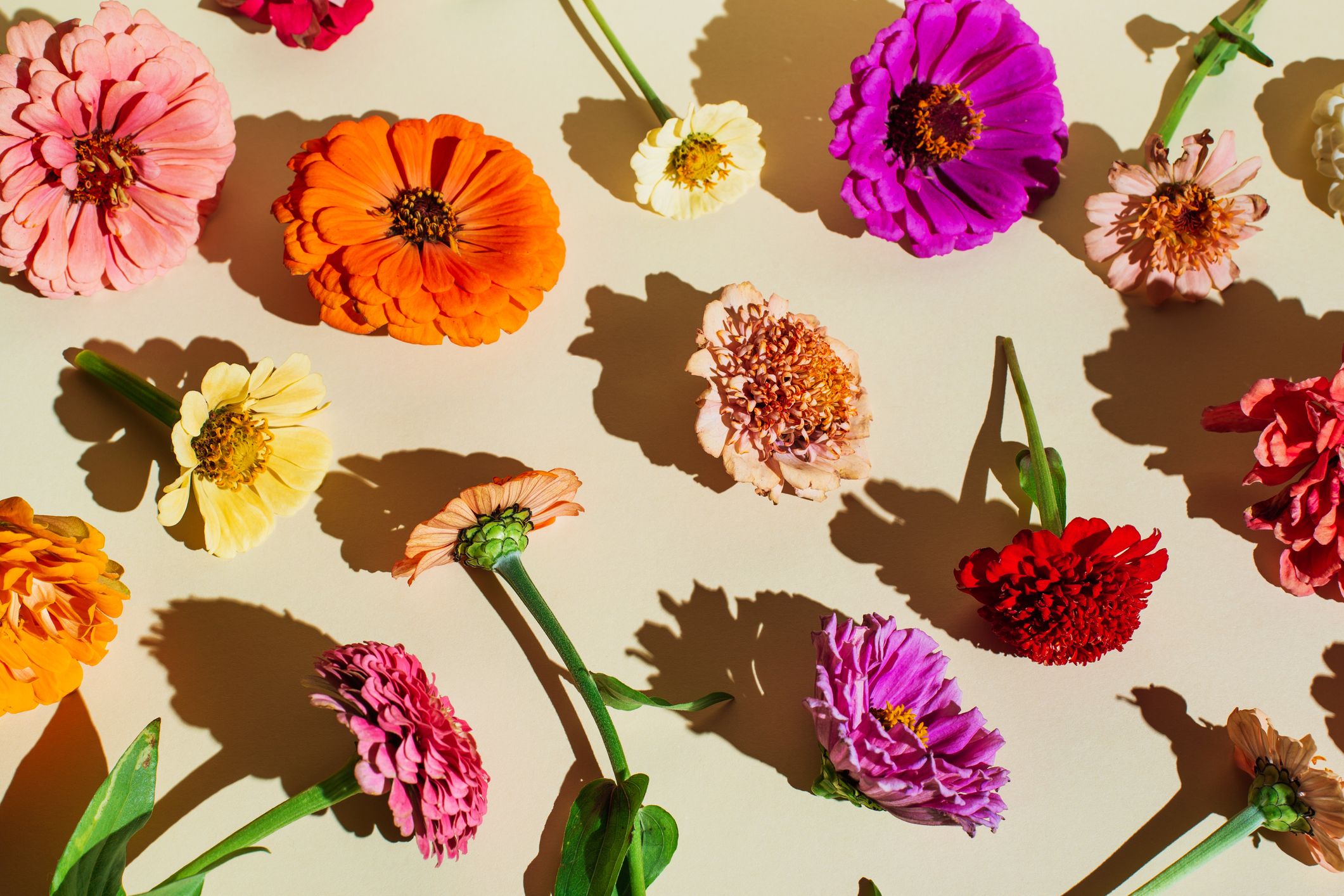
Historical Significance of Flowers and Death
Ancient Rituals and Burial Practices
Throughout history, flowers have played a significant role in funerary rituals and burial practices across cultures. In ancient civilizations such as Egypt, Greece, and Rome, flowers were commonly used to adorn tombs and graves. The act of placing flowers on a grave was seen as a way to honor the deceased and offer them solace in the afterlife.
Floral Symbolism in Art and Literature
Artists and writers throughout the ages have drawn inspiration from the ephemeral nature of flowers and their link to mortality. From Shakespeare’s tragic plays to Van Gogh’s melancholic paintings, the motif of flowers often serves as a powerful reminder of the fleetingness of life. This artistic exploration has further perpetuated the association between flowers and death.
Folklore and Superstitions
In many folklores and superstitions, certain types of flowers are believed to bring bad luck or foretell impending death. For example, the presence of white lilies in a household was considered an omen of death in Victorian times. Similarly, in some Asian cultures, chrysanthemums are associated with funerals and are rarely given as gifts due to their connection to death.
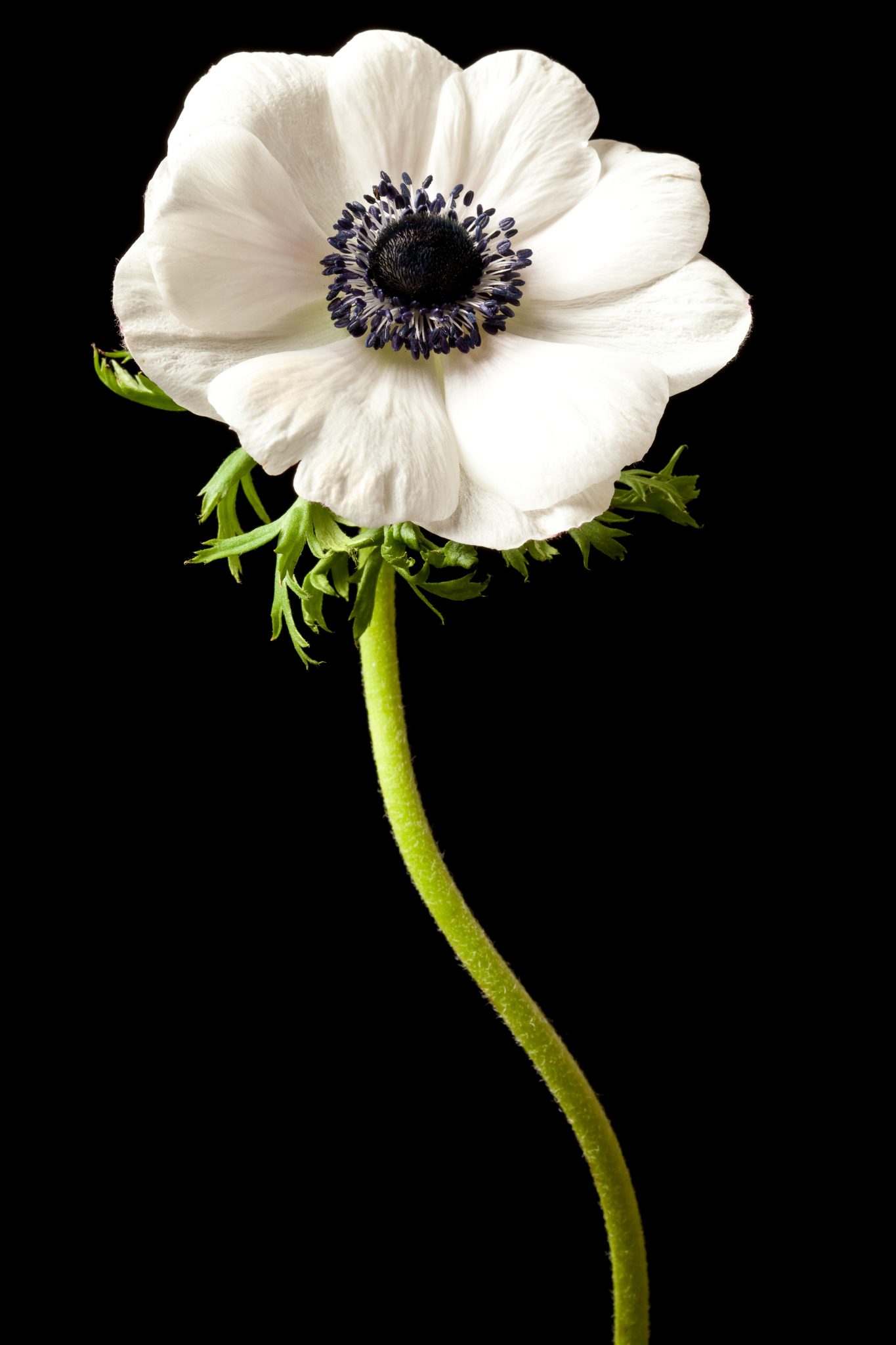
Top 13 Flowers Means Death: Decoding the Symbolic Language of Flowers That Mean Death
Black Rose
Flowers have long been used as symbols and representations of various emotions and ideas. One such flower that has held a significant meaning is the black rose. While it may seem contradictory to associate a flower with death, the black rose carries a deep and dark symbolism that has been explored in literature, legend, and even popular culture.
One of the most prominent associations of the black rose is its connection to death and dark magic. With its deep, dark hue, the black rose is often seen as a symbol of vengeful grief and farewell. Its color represents the mourning and sorrow associated with the loss of a loved one. In this way, the black rose is more than just a flower – it holds a deeper meaning that touches on the fragility of life and the inevitability of death.
The association of black roses with death can be traced back to ancient Greek mythology. According to legend, the Greek god of silence, Harpocrates, was said to have given a black rose to the god of love, Aphrodite, as a sign of secrecy. This act of secrecy ultimately led to the death of Adonis, the lover of Aphrodite, and solidified the black rose’s connection to death.

In literature and legend, black roses continue to appear as omens of death. They are often depicted as foreshadowing the demise of a character or marking the graves of doomed souls. Their inky petals hold a sense of mystery and beauty in decay, adding to their ominous aura. This symbolism has been repeatedly used in works of fiction, further cementing the black rose’s association with death.
Even in popular culture, the black rose has emerged as a symbol of mortality. It is often seen as a Halloween decoration, representing the darker aspects of the holiday. People use black roses to decorate their homes, adorn costumes, and even create Halloween-themed bouquets. This popular use of black roses acknowledges the inevitability of death and reminds us that it is an essential part of the cycle of life.
It is important to note that while black roses do not naturally occur, they have come to represent the acceptance of sorrow and loss. They serve as a reminder that death is a natural part of life and that we must learn to embrace it rather than fear it. The dark beauty of the black rose allows us to acknowledge our grief and find beauty even in the midst of mourning.
The black rose holds a powerful symbolism that reflects our deep-rooted fears and beliefs surrounding death. Its association with dark magic and omens of death has made it a popular symbol in literature, legend, and popular culture. Yet, beyond its eerie aesthetic, the black rose serves as a reminder to embrace the cycle of life and make peace with the inevitability of death.
Chrysanthemum
Flowers have long held symbolic meanings in various cultures around the world. While many flowers are associated with joy, love, and beauty, there is one type of flower that carries a much darker connotation – chrysanthemums.
Chrysanthemums, also known as mums, are often regarded as a beautiful and vibrant flower, with their full, lush blooms in various shades of red, yellow, and white. However, in many cultures, these flowers hold a deep symbolism of death and mourning.
In Chinese culture, chrysanthemums are traditionally used as funeral flowers and are closely associated with death. This association can be traced back to ancient times when chrysanthemums were used to honor and mourn the deceased. The white chrysanthemum, in particular, is seen as a symbol of lamentation and grief.
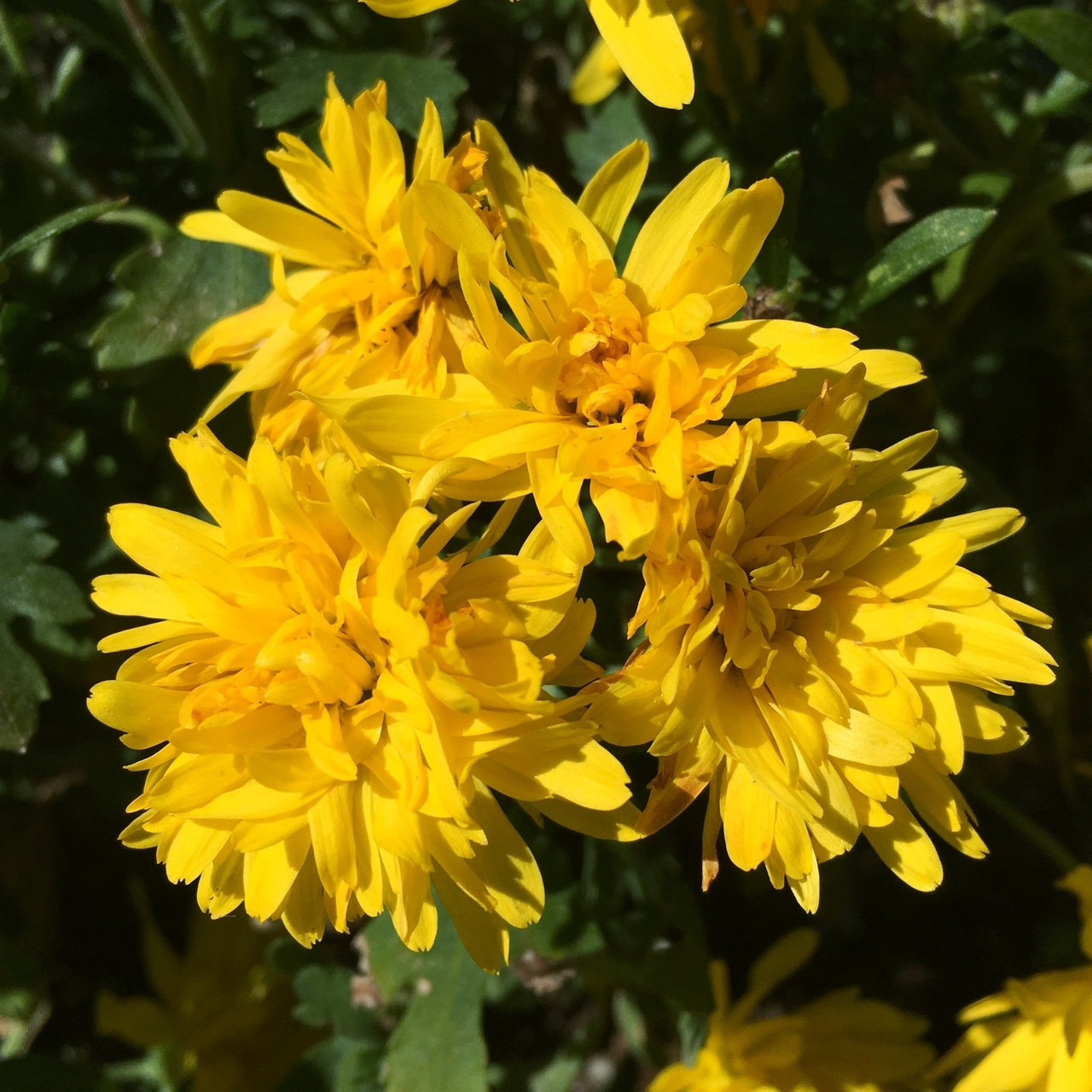
In Japan, the chrysanthemum is known as the “Flower of the Dead” and holds a significant place in their culture. The flower blooms during the fall season and is often seen decorating graves during sacred festivals such as the Bon Festival and O-bon. The petals of the chrysanthemum are said to represent the perfection of a noble death.
Furthermore, in both Chinese and Japanese culture, the chrysanthemum is seen as representing the soul and the afterlife. Its bittersweet beauty captures the solemn transition from life to death and serves as a reminder of the brevity of our days. In this way, the chrysanthemum becomes a powerful symbol of the cycle of life and death.
The chrysanthemum’s connection to death is not limited to East Asian cultures. In Western societies, it is often seen as a flower for funerals or memorials. Its elegant and somber appearance makes it a fitting tribute to the departed.
Despite its association with death, the chrysanthemum also holds positive symbolism in some cultures. In Chinese traditional medicine, it is believed to have healing properties and is used to treat various ailments. It is also a symbol of longevity and endurance, making it a popular gift for birthdays and other special occasions.
The chrysanthemum’s symbolism of death is deeply rooted in many cultures around the world. Its beauty and significance serve as a reminder of the inevitable journey from life to death and the importance of cherishing every moment we have. Whether seen as a symbol of grief or a celebration of life, the chrysanthemum remains an enduring and meaningful flower in many cultures.
Cockscomb
The cockscomb flower, also known as Celosia cristata, is a unique and striking flower that holds great significance in Mexican culture. It is best known as a Day of the Dead flower, or “Flor de Muertos,” and plays an important role in honoring deceased loved ones during this traditional holiday.
One of the most fascinating aspects of the cockscomb flower is its deep connection to death and the afterlife. According to Aztec legend, the flower bloomed from the blood of battle, making it a powerful symbol of both life and death. This belief stems from the fact that the cockscomb’s vibrant red color resembles blood, and its wavy, crested petals resemble flames or tongues of fire.
In Mexican culture, death is not seen as an end, but rather a continuation of life in a different form. This belief is reflected in the symbolism of the cockscomb flower. It represents the cycle of life and death, with the hope for rebirth and renewal after passing.
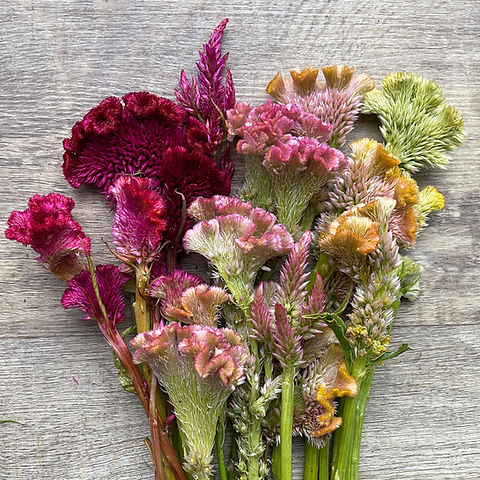
During Dia de los Muertos, or Day of the Dead, celebrations, families create beautiful altars, or “ofrendas,” to honor their deceased loved ones. These altars are adorned with various offerings and decorations, including the cockscomb flower. The bright, bold colors of the cockscomb add a festive and joyful touch to these memorials, celebrating the lives of those who have passed on.
The cockscomb’s ruffled, feather-like blooms also hold special meaning during Day of the Dead festivities. They represent the vibrancy and liveliness of past lives, reflecting the belief that the spirits of the departed return to visit their loved ones during this sacred time. The flower’s unique appearance adds a whimsical and playful element to the somber occasion, reminding us to celebrate life even in the face of death.
Beyond its symbolism in Day of the Dead celebrations, the cockscomb has a rich history and cultural significance in Mexico. It has been used as a medicinal herb, food source, and decorative plant for centuries. In ancient Aztec rituals, the flower was often used in ceremonies honoring their god of war, Huitzilopochtli.
Today, the cockscomb remains an important part of Mexican culture, particularly during Dia de los Muertos. Its vibrant colors and unique appearance make it a popular choice for altars and decorations, not only in Mexico but also in other parts of the world where this holiday is celebrated.
The cockscomb flower holds great meaning and symbolism in Mexican culture, especially during the Day of the Dead. It represents both death and the hope for rebirth, reflecting the belief that life is a continuous cycle. Its presence in celebrations honors the memories of loved ones and reminds us to embrace the joy and vibrancy of life, even in the face of death.
Deadly Nightshade
Flowers, typically associated with beauty and life, can also symbolize death and danger. This is particularly true for the deadly nightshade plant, also known as belladonna.
Deadly nightshade has a long history of being linked to death and the supernatural. In ancient Rome, it was often used as a method of execution, with victims being force-fed a concoction made from the plant’s leaves and berries. This not only caused a painful and slow death, but it also added an element of fear and mystique to the plant.
The plant’s connection to death doesn’t end there. In Greek mythology, the goddess Hecate was known to use nightshade in her potions and spells. It was believed that she could control and manipulate the powers of life and death with this toxic plant.
The name “nightshade” itself adds to the plant’s mysterious and ominous reputation. The word “shade” implies darkness, while “night” suggests the unknown and the supernatural. Combined with the word “deadly,” it creates a powerful image of danger and death.
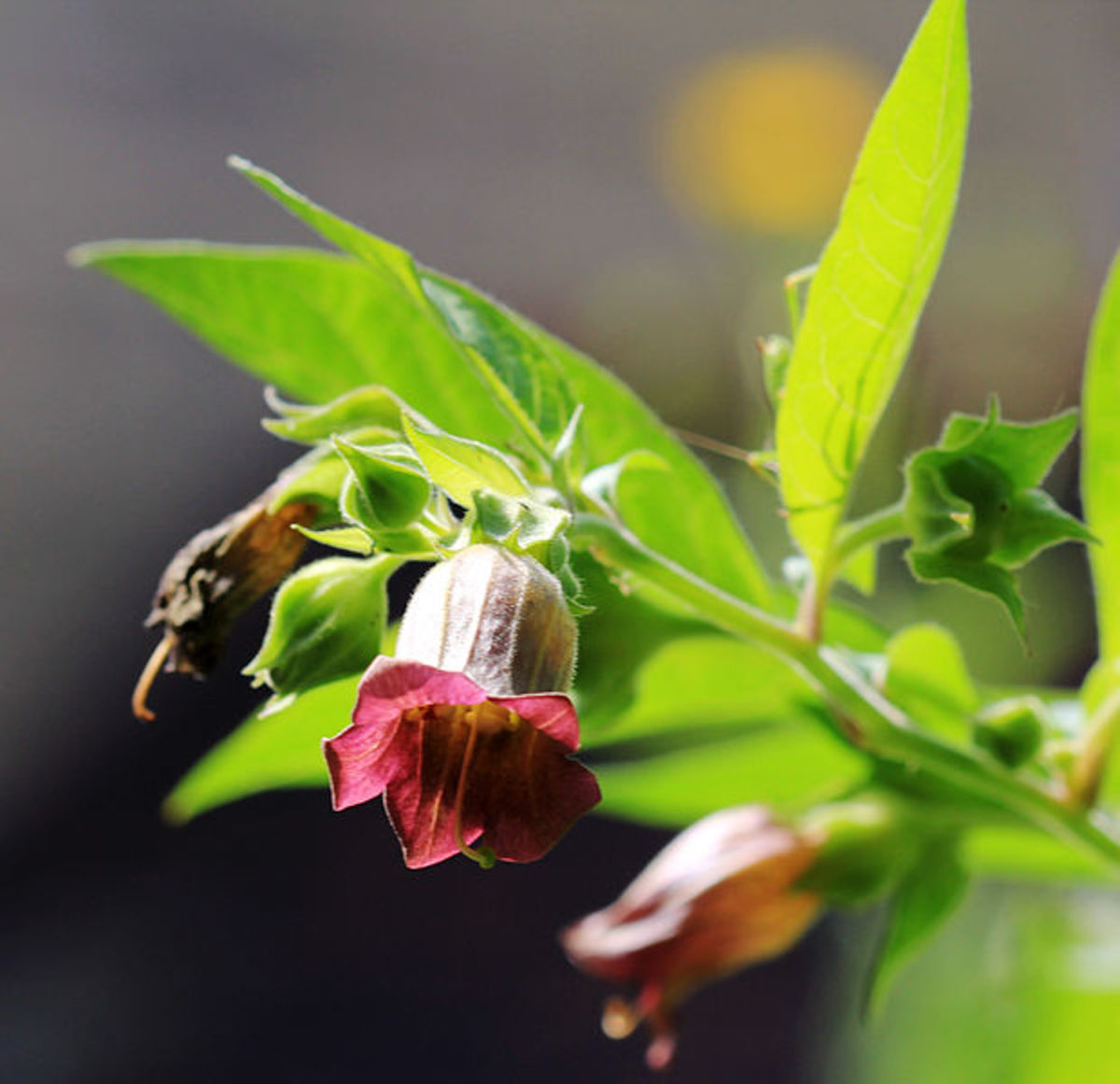
Even the appearance of the plant contributes to its macabre symbolism. Its dark green leaves and deep purple-black berries give off an eerie and foreboding aura. The flowers, with their deep purple petals and yellow centers, have a haunting beauty that belies the deadly nature of the plant.
In addition to its associations with death and witchcraft, deadly nightshade also has a more practical purpose. The plant contains highly toxic alkaloids, such as atropine, scopolamine, and hyoscyamine. These substances have been used in medicine for centuries, albeit in small and carefully controlled doses. Atropine, for example, can be used to dilate pupils and treat heart conditions, while scopolamine has been used to alleviate motion sickness.
This duality of deadly nightshade as both a lethal poison and a beneficial medicine highlights the ambiguity and complexity of life and nature. It serves as a reminder that there is often a fine line between what can heal us and what can harm us.
The association between flowers and death may seem contradictory, but deadly nightshade embodies this paradox perfectly. Its ominous name, connections to execution and witchcraft, and toxic properties all contribute to its symbolization of the darker side of nature. It serves as a cautionary reminder that even the most beautiful and alluring things can hold hidden dangers.
Devil’s Snare
The concept of flowers being associated with death is a common theme found in mythology and literature. However, one specific flower that is often linked to the idea of death is the devil’s snare plant. This plant, also known as Datura stramonium, is a species of flowering plant belonging to the nightshade family.
In many mythologies and ancient cultures, the devil’s snare plant is believed to have a dark and sinister nature. Its name itself reflects its dangerous reputation, as it is said to be used by the devil to ensnare and harm unsuspecting victims. This plant is known for its creeping tendrils that wrap around anything in its path, including insects, small animals, and even humans.
The idea of the devil’s snare using its tendrils to drag people to their death is a recurring motif in various myths and legends. In Greek mythology, for example, the plant was believed to have been created from the blood of Prometheus, who was punished by the gods for giving fire to humanity. The plant was said to have grown from the spot where his blood fell, and it was said to have the power to lure and trap humans, ultimately leading them to their demise.
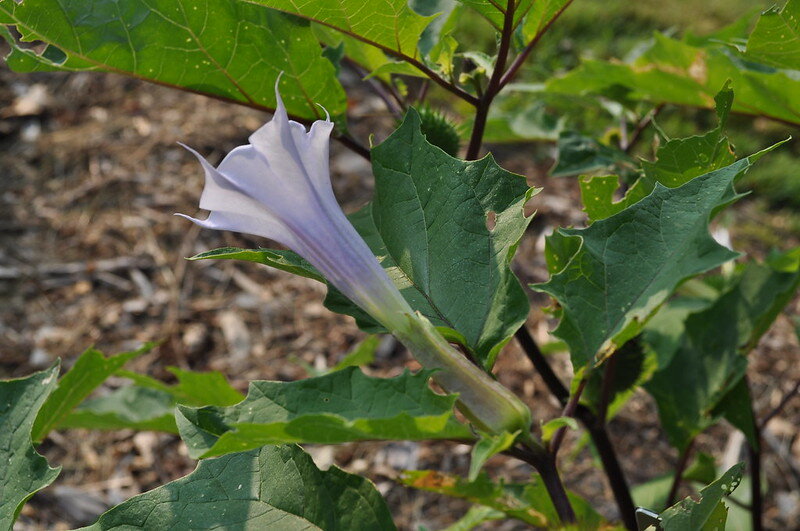
Similarly, in J.K. Rowling’s Harry Potter series, the devil’s snare is portrayed as a dangerous and deadly plant. In the first book, Harry, Hermione, and Ron find themselves trapped in a room full of this plant, which nearly kills them until they remember that the way to escape its grasp is to relax and let go. This scene not only highlights the magical abilities of the plant but also serves as a metaphor for how fear and panic can lead to one’s downfall.
The symbolism of the devil’s snare plant as an omen of death is also prevalent in various cultural beliefs. In some Native American traditions, it is believed that coming across this plant is a sign of impending death. Similar beliefs can also be found in ancient Greek and Roman cultures, where the plant was associated with Hades, the god of death.
The devil’s snare plant is also seen as a reminder of the fragility of life. Its insatiable craving for light and its ability to strangle anything that gets too close symbolize the fleeting nature of our time on Earth. Like the delicate flame that repels it, our lives are temporary and can easily be extinguished at any moment. This plant serves as a reminder to make the most out of our mortal lives and to appreciate the beauty and brevity of life.
The devil’s snare plant holds a powerful and dark symbolism in mythology and literature. Its connection to death and mortality serves as a cautionary tale about the dangers of being consumed by fear and the importance of cherishing the time we have in this world.
Funeral Lily
The use of flowers in funeral ceremonies dates back centuries and has been a common tradition across many cultures. Each type of flower carries its own symbolism and meaning, with some representing love, sympathy, or grief. However, one flower that is often associated with death is the funeral lily.
The funeral lily, also known as Lilium candidum or the white lily, gets its name from its mournful appearance, with star-shaped white petals that dangle like bells. It is a popular choice for funerals, and it is not hard to see why. Its elegant and delicate blooms evoke a sense of peace and purity, making it a fitting tribute to the deceased.
In ancient times, the funeral lily held a significant symbolic value in the Near East. It was believed to represent the resurrection and hope of new life after death. This association with new beginnings and renewal has continued to this day, and the funeral lily is often seen at Easter celebrations, mirroring the Christian belief in the resurrection of Jesus Christ.
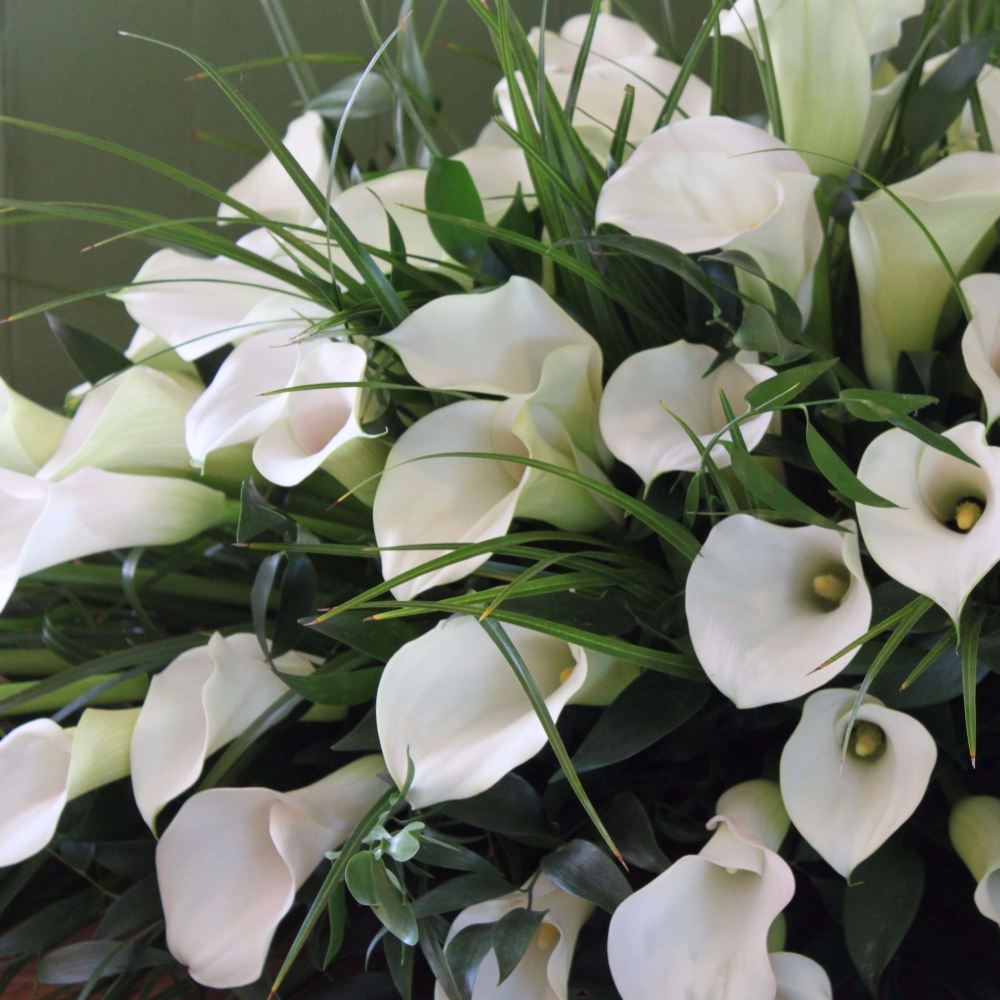
Aside from its symbolic associations with death and new life, the funeral lily also holds a deeper meaning. The flower’s nodding, bell-shaped blooms remind us of the fragility of life and the fleeting nature of our existence. Like the flower itself, life can be beautiful yet short-lived, and we must cherish the time we have with our loved ones.
Despite its mournful connotations, the funeral lily also symbolizes enduring remembrance. Its strength and resilience in the face of death serve as a reminder that even though our loved ones may be gone, their memory will live on forever in our hearts.
In modern times, the funeral lily is still commonly used in funerals and memorial services. Its powerful symbolism and serene beauty provide comfort to grieving families and honor the departed loved one. It serves as a peaceful farewell and a symbol of hope for those left behind.
The funeral lily is more than just a flower associated with death. It carries a rich history and deep symbolism that highlights the cycle of life and the eternal bond between the living and the deceased. Its delicate yet resilient nature reminds us to cherish our time on earth and honor our loved ones even in their absence. The funeral lily is a powerful reminder that even in death, there can be peace and beauty.
Ghost Orchid
The ghost orchid is a rare and beautiful flower that is steeped in symbolism, particularly that of death. This elusive flower is often found in deep swamps and forests, its delicate white blossoms standing out against the dark, shadowy background.
One of the most intriguing legends surrounding the ghost orchid is that it grows from the graves of Indigenous children. This myth is rooted in the belief that this flower is connected to the spirit world and has the power to guide souls through the grieving process and onto peace. The idea that these ethereal flowers are born from the resting place of young souls adds to their mystical and otherworldly aura.
Another legend surrounding the ghost orchid tells the story of a mother who wept so deeply for her lost child that her tears watered the ground and gave life to these delicate blooms. This tale highlights the emotional connection and significance of the flower, as well as its ability to bring comfort and solace to those who have experienced loss.
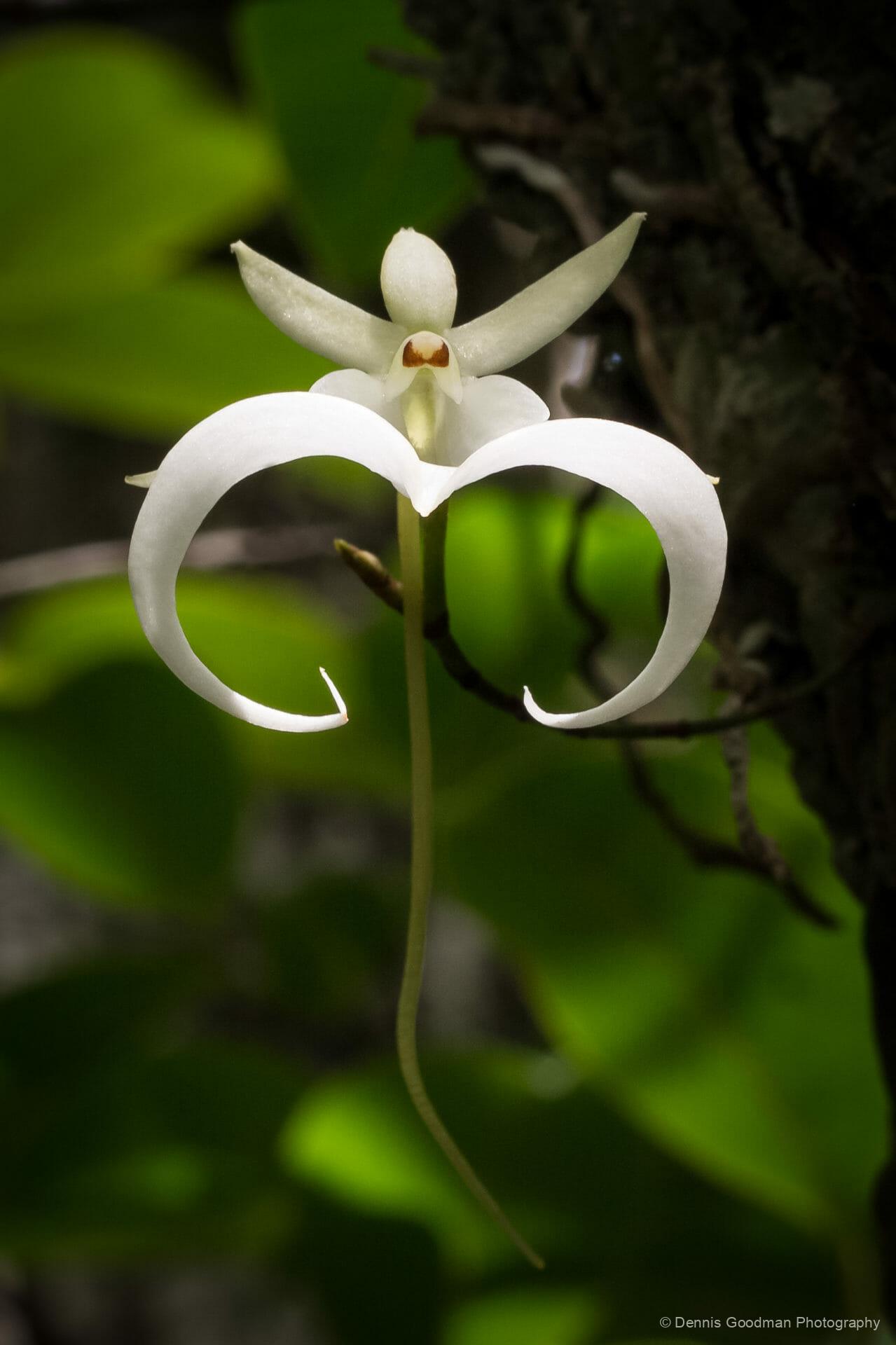
The ghost orchid is also said to serve as a guide for departed souls, helping them find their way through the murky space between life and death. It is seen as a beacon of light in the darkness, leading the way towards peace and acceptance.
The bloom of the ghost orchid is fleeting and ephemeral, adding to the symbolism of its connection to the afterlife. Its fragile flowers fade quickly into the shadows, mirroring the transience of life and the journey of the soul after death.
In many cultures, flowers are often associated with life and growth, but the ghost orchid stands out as a symbol of death and the mysterious realm beyond. Its haunting beauty and connection to the afterlife make it a truly unique and revered flower.
The ghost orchid is not just a rare and strikingly beautiful flower, but it is also steeped in rich symbolism related to death and the afterlife. Its presence is a reminder of the fragility of life and the mysteries that lie beyond, making it a truly captivating and enigmatic bloom.
Grave Violet
Flowers have long been used as symbols in various cultures and traditions to convey different meanings and messages. One such flower that holds a significant meaning is the grave violet. As the name suggests, this delicate flower is often associated with death and can be found adorning old cemeteries and forgotten gravesites.
The grave violet, also known as Viola odorata or sweet violet, is a small plant with fragrant white or purple flowers. In the Victorian era, it was quite common to see these flowers engraved on gravestones as a symbol of eternal sleep and remembrance of the deceased. The presence of these flowers on headstones and tombs serves as a poignant reminder that life is temporary, but love endures forever.
In Victorian times, death was an ever-present and socially accepted part of life. People were surrounded by reminders of death, from elaborate funeral customs to mourning rituals. Grave violets became a popular choice for adornment on gravestones due to their symbolism of innocence and everlasting love. They were seen as a way to honor and remember the departed, and to provide comfort to the living who visited their loved ones’ graves.
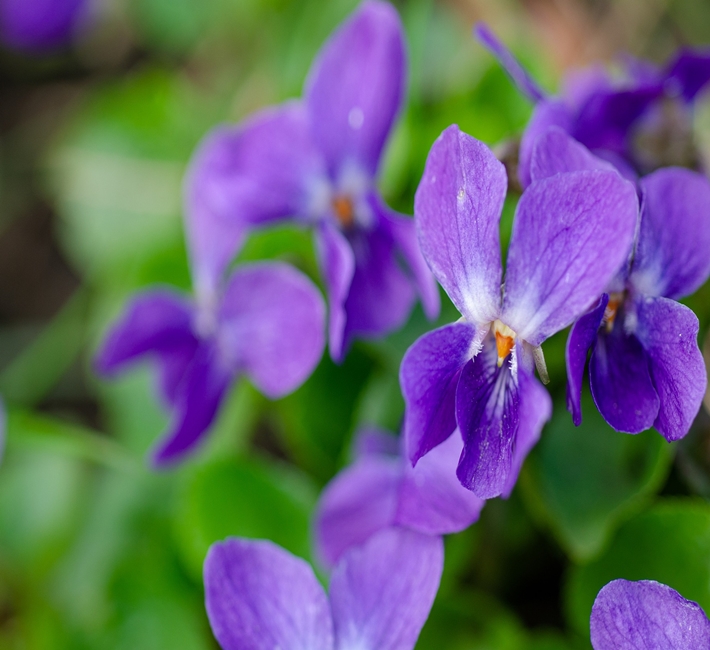
The tiny size of the grave violet also holds significance. In comparison to other flowers often used in funerary contexts, such as roses or lilies, the grave violet is much smaller and more delicate. This could symbolize the fleeting nature of life and how quickly it can be taken away. However, despite its small size, the grave violet still manages to make a powerful statement about the enduring power of love.
Another reason why the grave violet may have been chosen as a symbol of death is its association with the myth of Adonis in Greek mythology. According to the legend, Adonis was a handsome young man who was killed by a wild boar. It is said that where his blood fell, a flower with a deep red color sprouted – the anemone. The grave violet, with its deep purple and white hues, may have been seen as a representation of this myth and its connection to death.
In addition to its symbolism in death, the grave violet also holds significance in the language of flowers. In this Victorian tradition, different flowers were assigned specific meanings that could convey hidden messages or emotions. Grave violets were often associated with thoughts of love and remembrance, making them a perfect choice for use on gravestones and tombs.
The grave violet has a long-standing association with death and mourning. Its presence on headstones and tombs symbolizes eternal sleep, remembrance, and the enduring power of love. This delicate flower serves as a poignant reminder of the fleeting nature of life and the importance of cherishing our loved ones while they are still with us. So, it can be said that Flowers Means Death but also serve as a comforting reminder of our loved ones who have passed away.
Hemlock
Flowers have always held a special place in human culture, often representing beauty, love, and life. However, there is one flower that has a much darker connotation – the hemlock plant. This highly poisonous plant has long been associated with death in many cultures throughout history.
In ancient Greece, the hemlock plant was famously used to execute prisoners, including the philosopher Socrates. The Greek philosopher was sentenced to death by drinking a cup of hemlock tea, as it was believed to be a painless way to die. Thus, the hemlock plant became synonymous with death and was often referred to as the “poison of philosophers.”
During the Middle Ages, the hemlock plant was known as “devil’s bread” and was linked to dark witchcraft. It was often used in potions and spells that were said to foretell doom and bring about death. This association with witchcraft further solidified the hemlock plant’s reputation as a symbol of death and danger.
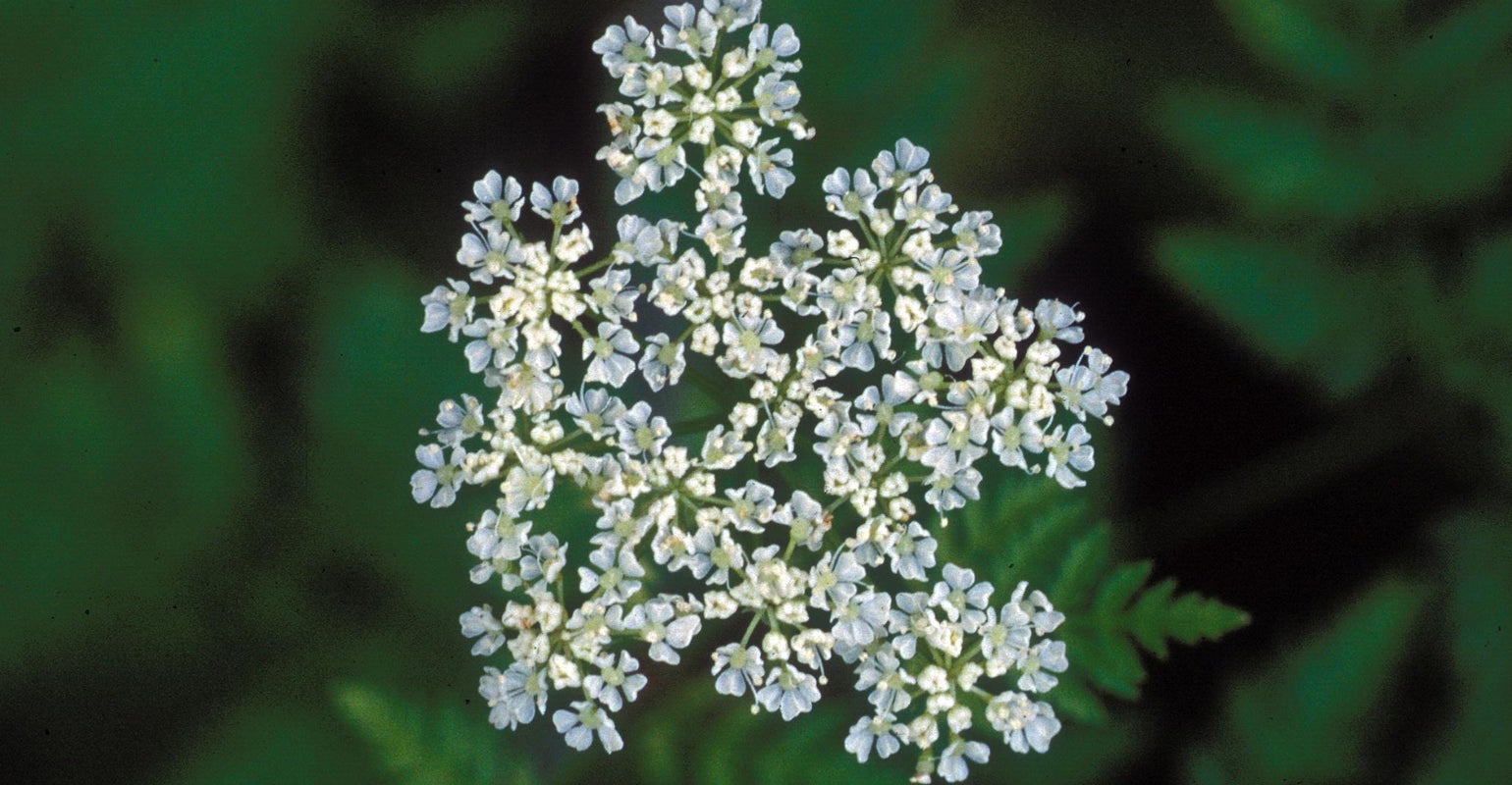
One of the most intriguing aspects of the hemlock plant is its appearance. Its lacy, delicate leaves give off an air of beauty and fragility, yet beneath this facade lies a deadly poison. This serves as a reminder that danger and peril can often be hidden in plain sight. Just like life itself, the hemlock plant can nourish or destroy, highlighting the fine line between healing and harming.
The dual nature of the hemlock plant also evokes a sense of duality in our own lives. We all have the capability to do both good and harm, and like the hemlock plant, we must navigate this fine line carefully. This makes the hemlock plant not only a symbol of death but also a symbol of balance and caution.
The hemlock plant’s association with death can be traced back to ancient times, and it continues to hold a powerful meaning in various cultures around the world. Its toxic nature and deceptive appearance serve as a reminder of the fragility of life and the importance of balance. So next time you encounter a sprig of hemlock, remember its dark history and the lessons it can teach us about life and death.
Marigold
Flowers have long been used as symbols in different cultures and traditions to convey various meanings. In Mexico, a country rich in cultural diversity, flowers hold significant importance in the celebration of the Day of the Dead, or Dia de los Muertos. Among the many flowers associated with this traditional holiday, one stands out – the brassy orange and yellow marigolds.
The vibrant colors of marigolds are often associated with the sun and light, making them a perfect representation of life and vitality. However, these flowers are not just symbols of life, but also of death. This duality is deeply rooted in the history and beliefs of the Aztec people, who believed that marigolds were flowers of both death and life.
According to Aztec beliefs, marigold tea was used as an early remedy for various illnesses. It was believed that the healing properties of marigold could help cure sickness and even bring the dead back to life. This belief is reflected in the tradition of sprinkling marigold petals over burial sites, symbolizing the promise of resurrection and renewal.

In modern-day Mexico, marigolds continue to play a significant role in the celebration of the Day of the Dead. These flowers are often used to decorate altars, or ofrendas, where offerings are made to honor and remember deceased loved ones. The bright and fiery hues of the marigolds are thought to attract spirits back to the earthly realm, allowing them to reunite with their families and loved ones for one night.
Marigolds hold great symbolism in the Day of the Dead celebrations, as they bridge the earthly and spiritual worlds. They represent the cycle of life and death, reminding us that death is not the end, but rather a part of the natural order of things. The presence of marigolds in Day of the Dead altars acknowledges death while also celebrating the continuation of life and the promise of reunion.
Moreover, the use of marigolds in the Day of the Dead celebrations is a reflection of the Mexican people’s resilient and festive spirit. Despite facing the loss of their loved ones, they find joy in celebrating their lives and honoring their memories through vibrant and lively traditions.
The brassy orange and yellow marigolds are more than just flowers used to decorate altars during the Day of the Dead. They hold deep cultural and spiritual significance, representing the duality of life and death and serving as a bridge between the earthly and spiritual realms. These flowers embody the essence of the Day of the Dead – acknowledging death while celebrating life’s renewal and finding joy in the midst of sorrow.
Morning Glory
During the Victorian era, flowers were used as symbols to represent different meanings and sentiments. The morning glory flower, in particular, was associated with death and mortality. This symbolism can be traced back to its fleeting nature – the flowers bloom at dawn and wither by dusk. This cycle of life and death resonated with the Victorians, who were preoccupied with the idea of mortality and the afterlife.
In Japanese lore, the morning glory also holds a significant meaning. It is often seen as a representation of the transience of life. This belief can be traced back to the Edo period when morning glories were commonly used to decorate coffins. These delicate flowers, with their short lifespan, were seen as a reminder of the fragility and impermanence of existence. This association with death and funerals has remained prevalent in Japanese culture, and morning glories are still used in funeral arrangements and as a way to honor and remember the deceased.

The symbolic connection between morning glories and death can also be attributed to their brief blooming period. Like our lives, which are finite and limited, each morning glory bloom lasts just one day. This fleeting beauty serves as a powerful reminder of the brevity of life and the inevitability of death. It urges us to make the most out of our time on earth and to live meaningfully.
Moreover, the association between morning glories and death may have evolved from the plant’s poisonous nature. All parts of the morning glory plant contain toxic compounds, and ingestion can lead to severe illness or even death. This toxic aspect further adds to the flower’s symbolism of mortality and serves as a cautionary tale about the dangers of life.
The morning glory flower holds a deep symbolic meaning of death and mortality. Its evanescent beauty, coupled with its use in funeral rituals and its toxic nature, have cemented this association in both Victorian and Japanese cultures. Through its delicate blooms, the morning glory serves as a reminder to embrace the fleeting nature of life and to live each day with purpose and meaning.
Peony
In Chinese culture, flowers hold significant meaning and symbolism. The peony, with its lush and ruffled blooms, is one of the most revered flowers in Chinese tradition. While it is often associated with romance and prosperity, there is a darker side to this beautiful flower – it is also known as the flower of death.
The belief that peonies symbolize death dates back centuries in Chinese folklore. According to ancient stories, the peony was believed to have the power to protect against evil spirits. Its large, vibrant flowers were seen as a shield against negative energies and were often used in rituals or ceremonies to ward off demons.
However, it is the white peony in particular that is closely associated with death in Chinese culture. White is traditionally the color of mourning in China, and white peonies are commonly used as funeral flowers. These delicate blooms represent departed souls, and their presence at funerals is meant to honor and pay respects to the deceased.

In addition to being used in funerals, peonies also play a significant role in Chinese burials. It is believed that the lavish and luxurious appearance of the peony represents honor and wealth. Therefore, by adorning the deceased with peonies, they are sent off in style, reflecting their status and achievements in life.
Moreover, peonies serve as a reminder to celebrate a life well lived. In Chinese culture, death is viewed as a natural part of the cycle of life, and peonies help to reinforce this belief. The exquisite beauty of these flowers serves as a reminder to cherish and appreciate the time we have on earth, and to celebrate the memories and legacies of those who have passed away.
In modern times, peonies are still widely used in Chinese funerals and burials, but they have also become popular in other forms of mourning and remembrance. Many people choose to plant peonies in memory of loved ones, as they are seen as a lasting and enduring tribute to their memory.
While the peony may be seen as a flower of death in Chinese culture, it is also a symbol of honor, wealth, and celebration. Its significance in funerals and burials serves as a reminder to appreciate and celebrate life, and its beauty continues to bring comfort and solace to those who have lost loved ones. The peony truly embodies the complex and multifaceted views of death in Chinese tradition.
Snapdragon
The snapdragon, a beautiful and intricate flower, has been associated with death for many centuries. In the language of flowers, each type of flower has a specific meaning or symbol. The snapdragon, with its distorted, dragon-like appearance, has come to represent deception and concealment. This symbolism is deeply rooted in Greek mythology, where the snapdragon was believed to have connections to the god of the underworld, Pluto.
In ancient Greece, it was common for people to offer protection from sorcery and faeries by placing snapdragons around their homes. These vibrant flowers were thought to ward off evil spirits and protect against dark forces. However, there was also an underlying belief that snapdragons had the ability to deceive and trick those who came across them.
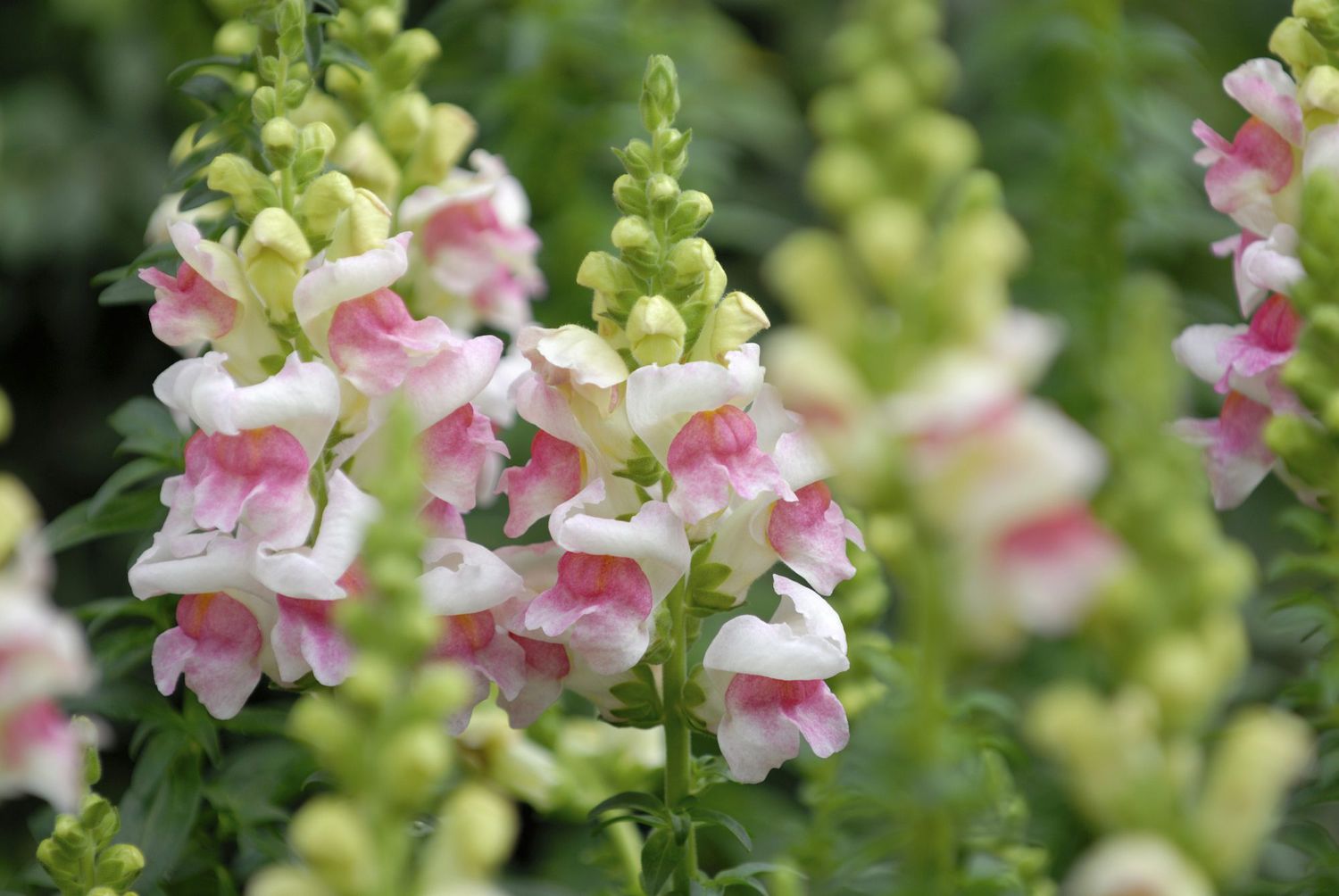
The snapdragon’s deceptive nature can be seen in its appearance. Its flowers are shaped like dragon heads, with a distinctive “snap” when the sides of the flower are pressed together. This unique feature has given rise to the flower’s name, as it resembles a dragon’s mouth snapping shut. But beyond its physical appearance, the snapdragon’s connection to deception is further exemplified by its link to the god of the underworld.
In Greek mythology, Pluto was known as the ruler of the dead and the god of the underworld. He was often depicted as a stern and merciless figure, with no tolerance for deceit or trickery. The inclusion of the snapdragon in this mythological narrative speaks to its association with death and the afterlife. It suggests that even in death, one must remain vigilant against deception and concealment.
Furthermore, the snapdragon’s association with Pluto’s realm adds an element of mystery and enigma to the flower. Just like the underworld, death remains shrouded in mystery, with many unanswered questions and unknowns. The snapdragon serves as a reminder that even in death, much remains obscured and unknown.
The snapdragon’s symbolism of deception and concealment in the language of flowers is deeply intertwined with its connection to Greek mythology and death. Its distorted, dragon-like flowers and link with Pluto’s realm allude to the idea that death is not always what it seems and that much remains hidden and unknown. The snapdragon serves as a powerful reminder of the mystery and uncertainty that surrounds death and the afterlife.
Examples of Floral Symbolism in Different Cultures
Lotus Flower: A Spiritual Metaphor
In Buddhist traditions, the lotus flower holds immense spiritual significance. Growing from muddy waters, the lotus symbolizes the journey of enlightenment and the triumph of the spirit over worldly attachments. Despite its association with life, the lotus also reminds believers of the impermanence of existence, emphasizing the interconnectedness of life and death.
Cempasúchil: The Mexican Day of the Dead
During the Mexican holiday ‘Day of the Dead,’ vibrant orange marigolds, known as cempasúchil, are used to honor deceased loved ones. It is believed that the petals of these flowers help guide the souls of the departed back to their families during this annual celebration. The sight of marigolds adorning altars and gravesites serves as a beautiful testament to the deep cultural connection between flowers and death.
Conclusion
Flowers speak many languages when it comes to matters of life, death, and remembrance. Those cloaked in somber colors like purple, black, and deep red most commonly convey grief. Yet even brighter blooms hold meaning by decorating graves, altars, coffins, and memorials worldwide.
Beyond their melancholy symbolism, flowers of death also represent hope, renewal, and the timeless cycle that links life and loss. Their fragile beauty reminds us that, like petals, our mortal lives are fleeting. We must nurture each moment and live meaningful lives that honor the deceased.
When words fail, flowers communicate sorrow, pay tribute, provide solace, and promise that the departed remain in our hearts always. Their silent poetry adorns our memorials across cultures, carrying profound messages of mortality.

We’re Emma Carole Paradis and Kimberly Carole, the owners and designers of Impeccable Nest, based in Bedford, New Hampshire. A mother-daughter team with a love of design. Originally from Manhattan Beach, California, now based in Bedford, New Hampshire, we bring a Southern California cool and New England tradition to our design. Not only do we work together…we also live together in a multi-generational home…and a home that they are known to design for others.
